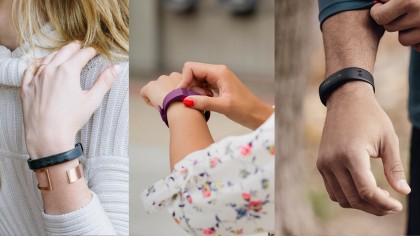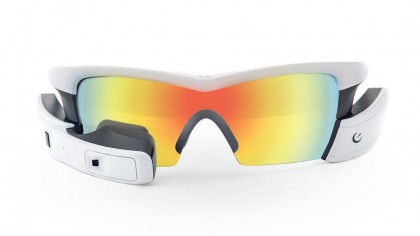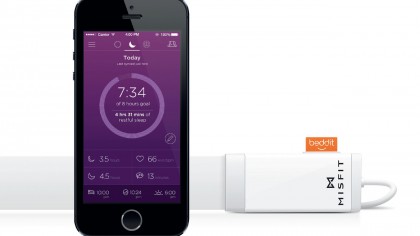How to improve your life with your PC
Boost your life
Getting regular exercise in our daily lives can be a bit of a chore, but it's not always the doing it that's the problem, it's the how to do it that can be the biggest hurdle. For example, if you like running, you can don a pair of trainers and simply go out for a run round the block.
It'll make you feel like you're getting fitter, but how do you really know you're actually improving your fitness? An easy way to keep track of what you're doing each time you exercise, whether it's running, cycling or even just a spot of tennis, is to get yourself kitted out with a fitness tracker, which normally straps onto your wrist – a bit like a watch (and also known as a wearable).
Not only does this have the benefit of telling you information such as how far you've run, and how long it took you, it'll also track your heart rate, so you know just how much you're working your body each time you exercise.

Some activity trackers, such as the Misfit Shine 2, only track your steps so you won't get the full benefit of finding out your heart rate, but others – like the Jawbone UP3 – will give you all the important metrics.
The former certainly isn't bad by any means – in fact it actually makes a great way of tracking your health if your fitness routine is light walking, or walking up an extra flight of steps to the office.
An activity tracker won't give you loads of numbers to play with, but it will give you an idea of how much you should be moving each day in order to boost your health.
It will also give you nudge if you've been lounging around for too long, but we can't promise you'll be turning into a super athlete any time soon. Activity and fitness trackers also offer one other excellent benefit: sleep tracking. While this might sound a little ridiculous, don't scoff – sleep is incredibly important to your wellbeing and if you're not getting enough, your health can suffer.
Sign up for breaking news, reviews, opinion, top tech deals, and more.
Consequently, it'll have a knock-on effect if you're trying to exercise regularly, as you won't have the same level of energy or motivation.
Sleep on it
By tracking your sleep, you can figure out – for starters – just how much of it you're getting each night. You'll also be able to work out when you're in light or deep sleep and, from here, your sleep tracker will then be able to work out methods of improving your sleeping state, such as changing when you get up in the morning and when you go to bed.
If you can't afford a fitness tracker, or you're not yet ready to commit to purchasing one, there's an inexpensive option available to you – if you already own a smartphone you can use a fitness app, such as Fitbit, to track your activities instead.
And because your phone has GPS built in, you'll also get a more accurate reading of your activities than a regular fitness band would be able to offer. The only caveat here is you have to carry your phone with you; this is fine if you're just walking to the bus stop, but if you're planning to go for a run then it could be tricky to stow away without it bouncing around in your pocket.
If you're feeling particularly flush, you can get a smartwatch, which is a sort of smartphone on your wrist, and – as with a phone – comes with a variety of health and fitness apps that allow you to easily track your activities on the move.
A final option for those planning to get really serious about their fitness is a sportswatch, such as the Garmin Fenix 3 or the Suunto Ambit 3. Both these wrist-based devices do everything a fitness tracker would, and much more.
They display your V02 Max, which basically tells you how fit you are, connect to a variety of sports meters (such as a cycling power meter) and with built-in navigation they'll even tell you where to exercise and how to get home afterwards.
They're also waterproof and seriously tough, making them ideal for the majority of outdoor situations. Once you've collated all this activity, fitness and sleep data on your wearable device, or smartphone, then the next step is to look at the data and figure out what's going on. This is where your trusty Windows 10 PC steps in to take care of business.
Using a fitness tracker like the Microsoft Band 2, you can plug it into your machine via USB and download the Microsoft Health app from the Windows Store. This app will give you an overview of your activities, with hard data so you can see how you're performing. You can, then, set activity goals to aim for next time.
Out-there options to help you get healthier the smart way

Recon Jet
These sports glasses have a built-in heads-up display which, using GPS, reveals how fast you're travelling and how far you've gone, in the corner of your eye. It can also connect to a variety of Bluetooth or ANT+ sensors.
You can even take calls, take photos and record video.

Beddit
If you like the sound of tracking your sleep habits, but you don't want to have to wear something on your wrist while you sleep, Misfit's Beddit could be the answer. Just strap the band to your mattress and Beddit will track a variety of data while you're snoozing, such as your heart rate, movement and even how much you snore.
It then wirelessly transfers this info to your smartphone so you can look back at it and discover ways to improve your sleep cycle.

Tile
Tile is a really simple, but potentially life-changing wearable. Technically, you don't actually wear this little stamp-sized device – instead it goes on your keys, phone, bag or whatever you might be worried about losing, and if/when you lose an item with a Tile attached to it, you can simply find it by using the compatible app on your phone.
If it's in range you can ring the Tile, or if not it will let you know the last time and place the item was seen.
Current page: Improve your health and fitness
Prev Page Make your home even smarter Next Page Be entertained